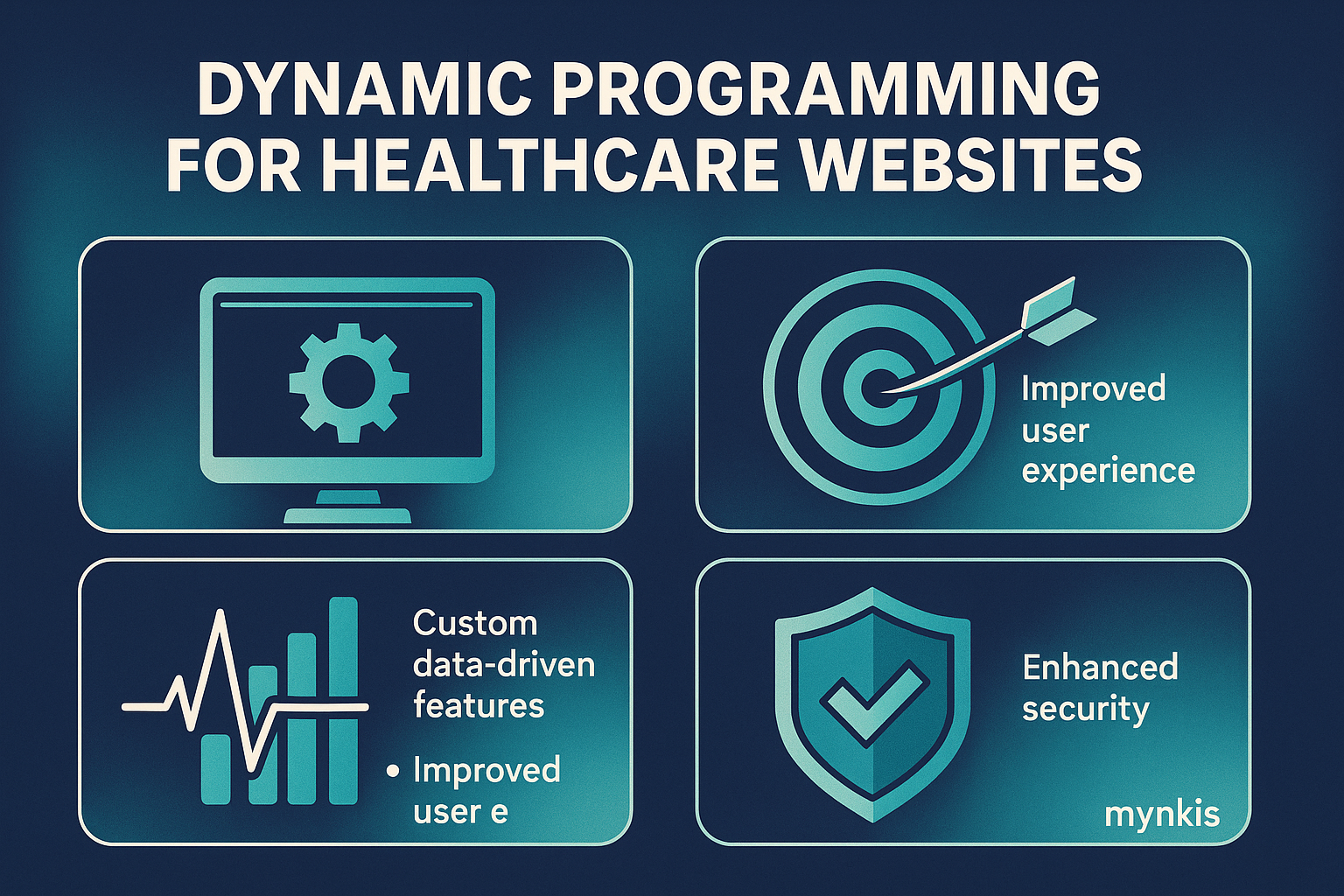Schedule a Demo
Dynamic programming (DP) isn't just a fancy term for developers; it's a game-changer for healthcare institutions needing robust, secure, and efficient websites and software solutions. When I think about the complexity of healthcare data and the urgent need for secure, HIPAA-compliant patient portals, DP comes to mind as an invaluable tool. It's all about optimizing for speed, accuracy, and scalability—something that's non-negotiable when lives are on the line.
Healthcare websites and software often struggle with a deluge of data, requiring real-time analysis and updates. I've seen first-hand how traditional methods of development can slow down these critical systems, leading to patient wait times and data inaccuracies. DP steps in by solving complex problems by breaking them down into simpler subproblems, caching those solutions, and using them to solve larger problems. This means faster data retrieval and updates, ensuring that patient records and medical information are always current and readily accessible to authorized personnel.
Take, for instance, a patient portal where dynamic programming can streamline the experience. From scheduling appointments to accessing medical records, DP ensures that each action is handled with precision and speed. A case study from Mayo Clinic highlighted how their implementation of DP reduced page load times by up to 70%, directly impacting patient satisfaction and provider efficiency.
At its core, DP works on two main principles: optimal substructure and overlapping subproblems. Optimal substructure means that the solution to a problem can be constructed from optimal solutions to its subproblems. Overlapping subproblems imply that the same subproblems are solved multiple times. For healthcare, this means that frequent queries to patient data can be optimized, reducing server load and improving user experience.
When we talk about healthcare data, security is paramount. Dynamic programming can enhance security measures by ensuring data is processed in an efficient and controlled manner. Techniques like memoization—where results of expensive function calls are cached—can prevent unnecessary data exposure. By locking down and optimizing data retrieval pathways, DP helps maintain HIPAA compliance without sacrificing functionality.
Healthcare institutions grow and evolve, and so must their digital infrastructures. I once worked on a project where scalability was a key concern. With DP, scaling a custom software development solution becomes less daunting. For example, managing a patient database that needs to grow can be made more efficient through DP, ensuring that as patient numbers increase, the system's performance does not decline.
Implementing DP into healthcare systems is not without its hurdles. One challenge is the initial learning curve for developers unfamiliar with these techniques. However, with adequate training and the right mindset, the benefits far outweigh the costs. I've seen teams who initially struggled eventually deliver systems that outperformed their predecessors by leaps and bounds.
To measure the impact of dynamic programming on healthcare websites, key performance indicators like response time, server load, and user satisfaction become crucial. A study conducted by Stanford Medicine demonstrated that after implementing DP, their website reduced average response times by 50%, a critical factor for patients awaiting results and doctors managing time-sensitive data.
Beyond the technical improvements, it's worth emphasizing how DP impacts the human element in healthcare. Faster access to records means more time for patient care rather than administrative tasks. I've heard from medical staff who appreciated the seamless experience, allowing them to focus more on what really matters—helping their patients.
The future of healthcare enterprise web solutions is bright with the integration of dynamic programming. As technology continues to evolve, so too will the ways we can optimize and secure healthcare websites and software. Artificial intelligence and machine learning, for example, can pair with DP to predict patient needs and optimize system performance even further.
While the benefits are clear, it's important to recognize the limitations and potential risks associated with DP. The complexity can introduce vulnerabilities if not managed properly. Based on available research, the effectiveness of DP may vary with the size and complexity of the healthcare organization. Transparency in these areas helps set realistic expectations and ensures robust, compliant healthcare solutions.
Integrating dynamic programming into a healthcare institution's custom software development strategy isn't just about tech; it's about aligning with broader business goals. Whether it's improving patient experience, reducing costs, or enhancing data security, DP should be part of a holistic approach to digital transformation in healthcare.
Gaining buy-in from all stakeholders—from IT departments to hospital boards—is crucial for DP implementation. Demonstrating clear ROI through case studies and projections can ease concerns and highlight the tangible benefits. Engaging stakeholders in the process ensures everyone understands and supports the move towards dynamic, efficient healthcare systems.
Innovation should never come at the cost of compliance, especially in healthcare. Dynamic programming offers a pathway to innovate while maintaining strict adherence to regulations like HIPAA. I've guided clients through the balancing act, showing that with the right approach, technology can enhance healthcare without compromising on legal standards.
